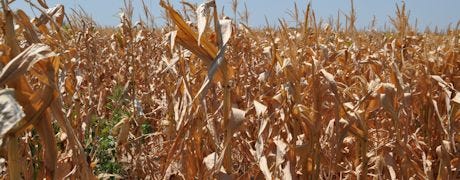January 10, 2013

Only one county in Kansas – Doniphan in the far northeast – is not designated as eligible for low-interest emergency loans through the USDA Farm Service.
While only 88 counties were designated as primary disaster areas, 16 additional counties are contiguous disaster areas.

"Natural disasters of this magnitude require all of us to do what we can to conserve water resources," Brownback said. "This federal disaster declaration is an important first step in the new year to provide relief but we must do more. I am committed to doing everything I can to reduce the impact this drought is having on Kansas and to help Kansas prepare for the future. But I challenge every Kansan to do all you can to conserve water."
"We are entering the third consecutive year of a severe drought. While we cannot make it rain, it is imperative for everyone to continue working together to deliver relief and assistance to drought-stricken farmers and ranchers," Gov. Sam Brownback said. "We commend USDA for taking swift action to extend drought relief measures. Kansas has and will continue working closely with our partners at USDA to respond to the drought and reduce its impact on farmers and ranchers."
In order to receive a federal disaster declaration, a county must show a drought intensity value of at least D2 (Drought Severe) for eight consecutive weeks based on measurements by the U.S. Drought Monitor. Nationwide, USDA declared 597 counties in 14 states as primary disaster areas last week, the first federal disaster declaration made by USDA in 2013.
"Natural disasters of this magnitude require all of us to do what we can to conserve water resources," Brownback said. "This federal disaster declaration is an important first step in the new year to provide relief but we must do more. I am committed to doing everything I can to reduce the impact this drought is having on Kansas and to help Kansas prepare for the future. But I challenge every Kansan to do all you can to conserve water."
Brownback met with the Kansas Drought Response Team last Friday to receive updates from key state and federal leaders on the increasing toll the drought is taking on Kansas. As the drought persists, Brownback said it is imperative to continue monitoring precipitation levels, soil moisture content, stream flow and reservoir levels as well crop conditions across the state.
You May Also Like




